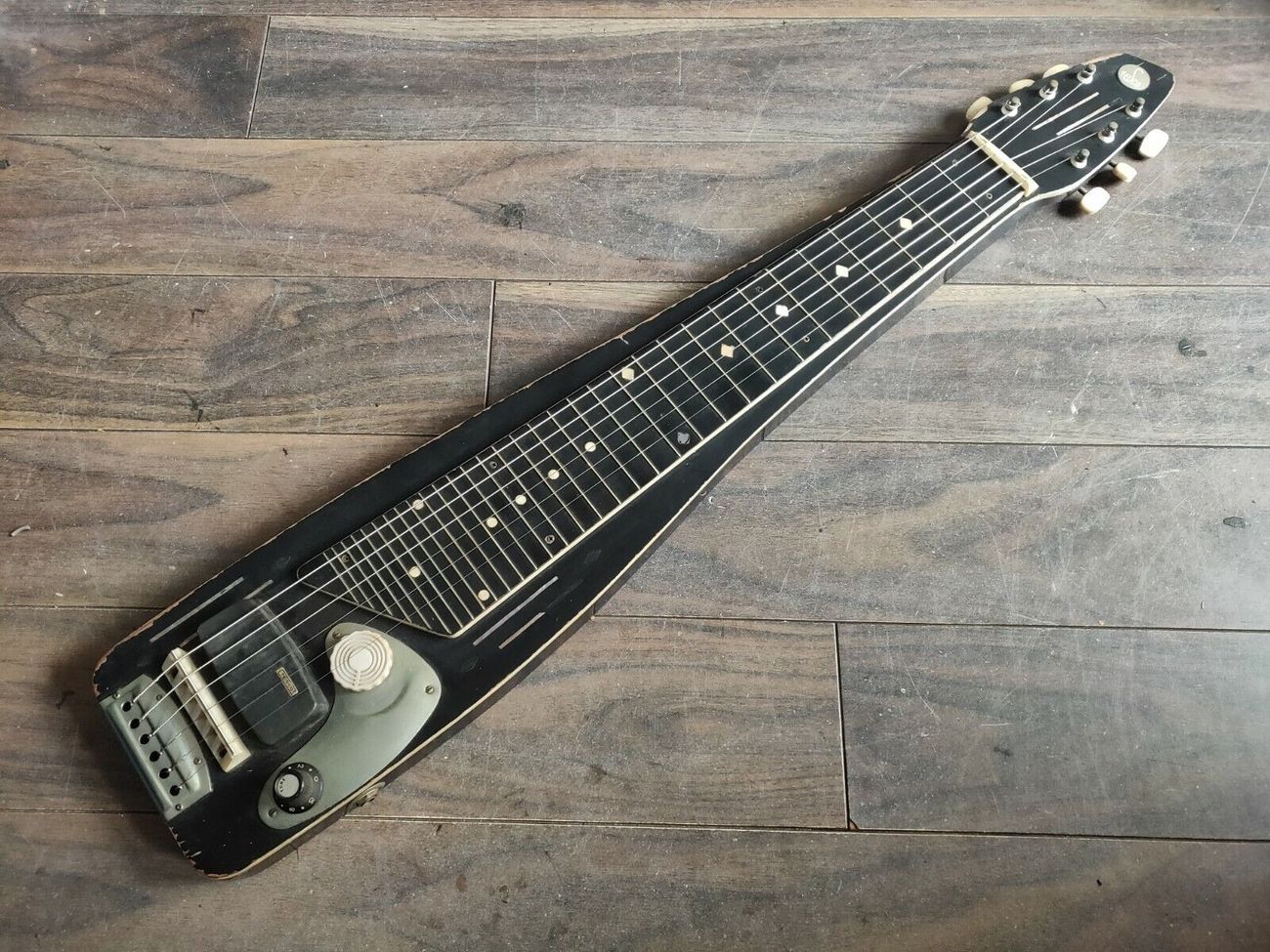Home>Instruments>Guitar>How To Play Scales On Guitar


Guitar
How To Play Scales On Guitar
Published: February 14, 2024
Learn how to play scales on guitar with our step-by-step guide. Master the basics and improve your guitar skills today!
(Many of the links in this article redirect to a specific reviewed product. Your purchase of these products through affiliate links helps to generate commission for AudioLover.com, at no extra cost. Learn more)
Table of Contents
Introduction
Introduction
Playing scales on the guitar is a fundamental aspect of mastering the instrument. Whether you're a beginner or an experienced guitarist, understanding and practicing scales is essential for developing dexterity, improving finger strength, and enhancing your overall musical proficiency. Scales form the foundation of melodies, solos, and improvisation, making them a crucial component of a guitarist's skill set.
In this comprehensive guide, we will delve into the world of guitar scales, exploring various patterns, techniques, and practice tips to help you elevate your playing. By the end of this article, you will have a deeper understanding of major, minor, pentatonic, and blues scales, along with the fundamental techniques required to play them proficiently. Whether you aspire to shred through intricate solos or strum soul-stirring melodies, mastering scales will undoubtedly propel your guitar playing to new heights.
Let's embark on this enlightening journey through the realm of guitar scales, where we'll unravel the intricacies of different scale patterns, unlock essential techniques, and equip you with valuable practice strategies to hone your skills. Whether you're drawn to the melodic allure of major scales, the emotive depth of minor scales, the versatility of pentatonic scales, or the raw expressiveness of blues scales, this guide will empower you to navigate and master these essential musical elements with confidence and finesse. So, grab your guitar, tune up, and let's dive into the captivating world of guitar scales.
Understanding Scales
Understanding Scales
Before delving into the intricate patterns and techniques of guitar scales, it’s essential to grasp the fundamental concept of scales in music. In simple terms, a scale is a sequence of musical notes arranged in ascending or descending order, typically spanning an octave. Scales serve as the building blocks of melodies and harmonies, providing a framework for creating and understanding music.
On the guitar, scales are represented by specific patterns of notes along the fretboard. These patterns, when mastered, enable guitarists to navigate the instrument with precision and fluidity, unlocking a myriad of creative possibilities. Understanding scales involves familiarizing yourself with intervals, which are the distance between two notes, and the unique characteristics of different scale types.
One of the key elements in understanding scales is the concept of tonality, which refers to the arrangement of intervals and the “tonal center” or root note of a scale. The tonal center serves as the anchor point for the scale, around which the other notes revolve, lending a distinct musical flavor to the scale. Whether it’s the uplifting and bright sound of major scales, the melancholic and introspective nature of minor scales, or the bluesy, expressive quality of blues scales, each scale type embodies its own sonic identity.
As you embark on your journey to understand scales, it’s crucial to internalize the sound and character of each scale type, allowing your musical intuition to guide your exploration. By immersing yourself in the unique tonalities and inherent emotions of different scales, you’ll develop a profound connection with the music you create, infusing your playing with depth and expression.
Ultimately, understanding scales is about more than memorizing fretboard patterns; it’s about embracing the emotive power and creative potential that scales offer. With this foundational knowledge in place, you’re poised to delve into the practical aspects of playing scales on the guitar, honing your technique and unleashing your musical imagination.
Basic Technique
Basic Technique
Mastering the basic techniques for playing guitar scales is crucial for developing fluency, speed, and precision. Whether you’re wielding a pick or using fingerstyle, the following foundational techniques will lay the groundwork for your scale-playing prowess:
- Fretting Hand Position: Ensure that your fretting hand maintains a relaxed and curved posture, with your fingers positioned directly behind the frets to minimize string buzzing and facilitate clean note articulation.
- Alternate Picking: When using a pick, practice alternate picking by striking the strings with a downstroke followed by an upstroke in a continuous motion. This technique enhances speed and rhythmic consistency, essential for fluid scale execution.
- Fingerstyle Technique: If employing fingerstyle, focus on finger independence and economy of motion, allowing each finger to pluck the strings with precision and control. Develop a fluid, relaxed fingerstyle approach to maximize dexterity and articulation.
- Hand Synchronization: Coordinate the movements of your fretting hand and picking hand to achieve seamless synchronization. This involves precise timing and alignment to produce clear, even notes and maintain a steady rhythm.
- String Crossing: Practice transitioning between strings smoothly and efficiently, minimizing excess movement and optimizing the trajectory of your picking or fretting hand to navigate different string sets effortlessly.
By honing these fundamental techniques, you’ll establish a solid foundation for tackling various scale patterns and unlocking the expressive potential of the guitar. Whether you’re embarking on the exhilarating journey of mastering major, minor, pentatonic, or blues scales, these basic techniques will bolster your playing proficiency and pave the way for musical exploration and creativity.
Major Scale Patterns
Major Scale Patterns
The major scale is a cornerstone of music theory and serves as the foundation for countless melodies and harmonies across various genres. Mastering major scale patterns on the guitar opens up a world of melodic possibilities and provides a springboard for improvisation and composition. Here are some essential major scale patterns to familiarize yourself with:
- Open Position: The open position major scale pattern is a fundamental sequence of notes that spans the first few frets of the guitar. It serves as an excellent starting point for beginners, allowing for easy visualization and fretting of the scale.
- Three Notes per String: This pattern involves playing three notes on each string as you ascend and descend the fretboard, facilitating fluid and efficient movement across the neck. It’s favored by many lead guitarists for its conducive nature to fast, fluid playing.
- CAGED System: The CAGED system provides a framework for visualizing major scale patterns across the entire fretboard, utilizing chord shapes as reference points to map out scale positions. This approach enhances fretboard navigation and empowers guitarists to play major scales in various positions and octaves.
Understanding and internalizing these major scale patterns will equip you with the tools to craft captivating melodies, construct solos, and navigate the fretboard with confidence. By immersing yourself in the rich tonality and harmonic structure of the major scale, you’ll cultivate a deep understanding of music theory and expand your improvisational prowess.
Whether you’re delving into the uplifting aura of the Ionian mode, exploring modal interchange, or integrating major scale fragments into your compositions, mastering major scale patterns is an indispensable step in your journey as a guitarist. Embrace the versatility and melodic allure of the major scale, and let its timeless resonance fuel your musical creativity.
Minor Scale Patterns
Minor Scale Patterns
Exploring minor scale patterns on the guitar unveils a rich tapestry of emotive and evocative sounds, indispensable for crafting soul-stirring melodies and poignant solos. The minor scale, with its distinctive blend of melancholy and depth, forms an integral part of the guitarist’s sonic palette. Here are key minor scale patterns to delve into:
- Natural Minor Scale: Also known as the Aeolian mode, the natural minor scale pattern embodies a haunting and introspective quality, making it a staple in rock, metal, and blues music. Mastering this pattern unlocks the expressive potential of the minor scale, allowing for poignant melodic expression and soulful improvisation.
- Harmonic Minor Scale: Distinguished by its raised seventh degree, the harmonic minor scale pattern infuses compositions with a touch of exoticism and tension. This pattern is favored for its ability to evoke a sense of drama and intrigue, adding depth and complexity to musical phrases and solos.
- Melodic Minor Scale: The melodic minor scale pattern features a raised sixth and seventh degree when ascending, and a natural minor configuration when descending. This unique duality imparts a captivating and versatile character to the scale, making it a compelling choice for jazz, fusion, and progressive music.
By immersing yourself in these minor scale patterns, you’ll harness the raw emotional power and expressive range of the minor scale, enriching your musical vocabulary and imbuing your playing with depth and nuance. Whether you’re crafting haunting melodies, infusing solos with emotive phrasing, or exploring modal interchange and harmonic modulation, mastering minor scale patterns is essential for sculpting captivating musical narratives.
Embrace the evocative allure of the minor scale, and allow its poignant resonance to infuse your playing with a profound sense of emotion and artistry. By internalizing the unique tonalities and melodic contours of minor scale patterns, you’ll embark on a transformative musical journey, where every note becomes a vessel for raw expression and evocative storytelling.
Pentatonic Scale Patterns
Pentatonic Scale Patterns
The pentatonic scale holds a revered status in the realm of guitar playing, revered for its timeless appeal, versatility, and melodic expressiveness. Whether you’re delving into blues, rock, jazz, or beyond, mastering pentatonic scale patterns is a gateway to crafting soulful, emotive solos and captivating melodic phrases. Here are essential pentatonic scale patterns to explore:
- Minor Pentatonic Scale: Renowned for its emotive and bluesy character, the minor pentatonic scale pattern is a cornerstone of lead guitar playing. Its distinctive intervals and evocative tonality make it a go-to choice for crafting searing solos and emotive melodic lines across various musical genres.
- Major Pentatonic Scale: Embodying a bright and uplifting quality, the major pentatonic scale pattern infuses compositions with a sense of optimism and melodic elegance. Widely utilized in country, pop, and rock music, this pattern offers a refreshing sonic palette for crafting melodically rich guitar solos and uplifting musical motifs.
- Blues Scale: The blues scale pattern, an extension of the minor pentatonic scale, introduces the iconic “blue note” for added expressiveness and emotional depth. This scale pattern is synonymous with the raw, impassioned sound of blues music, empowering guitarists to channel soul-stirring emotion and gritty authenticity in their playing.
By immersing yourself in these pentatonic scale patterns, you’ll unlock a world of melodic possibilities, honing your ability to weave captivating musical narratives and express profound emotion through your playing. Whether you’re crafting searing blues licks, sculpting soaring rock solos, or infusing jazz improvisations with soulful phrasing, mastering pentatonic scale patterns is a transformative journey that empowers you to speak through your instrument with eloquence and passion.
Embrace the timeless allure of the pentatonic scale, and allow its evocative resonance to become a cornerstone of your musical expression. By internalizing the melodic contours and emotive nuances of pentatonic scale patterns, you’ll embark on a musical odyssey where every note becomes a conduit for raw emotion and soul-stirring melody.
Blues Scale Patterns
Blues Scale Patterns
Delving into blues scale patterns on the guitar unveils a world of raw emotion, expressive phrasing, and soul-stirring musicality. Rooted in the rich traditions of blues music, mastering blues scale patterns empowers guitarists to channel visceral emotion, gritty authenticity, and evocative storytelling through their playing. Here are key blues scale patterns to explore:
- Minor Blues Scale: The minor blues scale pattern embodies the essence of raw, impassioned blues music, characterized by its soulful, melancholic tonality and the inclusion of the iconic “blue note.” This pattern is a cornerstone of blues lead guitar playing, serving as a vehicle for emotive expression and searing, soulful improvisation.
- Major Blues Scale: Infusing compositions with a sense of optimism and melodic elegance, the major blues scale pattern offers a refreshing sonic palette for crafting melodically rich guitar solos and uplifting musical motifs. It introduces a unique blend of major and minor tonalities, adding depth and versatility to blues-inspired musical phrases.
- Extended Blues Scale: Building upon the traditional blues scale, the extended blues scale pattern incorporates additional notes to further expand the expressive range and melodic flexibility. This extended variation empowers guitarists to weave intricate, emotive phrases and explore a broader spectrum of tonal colors within the blues idiom.
By immersing yourself in these blues scale patterns, you’ll tap into the raw, impassioned spirit of blues music, honing your ability to convey profound emotion and authentic storytelling through your playing. Whether you’re crafting soulful blues ballads, unleashing searing lead guitar solos, or infusing jazz and rock compositions with bluesy flair, mastering blues scale patterns is a transformative journey that amplifies your musical expressiveness and connects you to the soul of the music.
Embrace the evocative allure of blues scale patterns, and allow their emotive resonance to infuse your playing with a profound sense of emotion and artistry. By internalizing the distinctive tonalities and expressive nuances of blues scale patterns, you’ll embark on a musical odyssey where every note becomes a conduit for raw, unfiltered emotion and soul-stirring musical storytelling.
Practice Tips
Practice Tips
Mastering guitar scales requires dedicated practice and a strategic approach to skill development. Here are valuable tips to enhance your scale practice sessions and elevate your playing:
- Consistent Routine: Establish a regular practice routine for scales, dedicating focused time to scale exercises and drills. Consistency is key to reinforcing muscle memory and building proficiency.
- Metronome Mastery: Practice scales with a metronome to improve timing, rhythm, and precision. Gradually increase the tempo as your proficiency grows, challenging yourself to maintain accuracy at higher speeds.
- Variety in Articulation: Explore different articulation techniques, such as legato, alternate picking, and sweeping, to cultivate dynamic and expressive scale playing. Varied articulation adds depth and nuance to your musical phrases.
- Modal Exploration: Dive into the modal characteristics of scales, experimenting with modal interchange and improvisation within specific modes. This enriches your understanding of scale application and fosters creative exploration.
- Ear Training: Develop your ear by practicing scales by ear, without visual aids. This sharpens your musical intuition and enhances your ability to internalize scale patterns and tonalities.
- Phrasing and Dynamics: Focus on crafting melodic phrasing and integrating dynamic nuances into your scale playing. Emphasize note articulation, vibrato, and expressive bends to imbue your playing with personality and emotion.
- Jamming and Collaboration: Engage in jam sessions with other musicians or backing tracks to apply scales in a musical context. Collaborative playing hones your improvisational skills and fosters musical interaction.
- Recording and Self-Evaluation: Record your scale practice sessions and solo improvisations for self-evaluation. Listening critically to your playing helps identify areas for improvement and track your progress over time.
By integrating these practice tips into your daily routine, you’ll cultivate a disciplined and holistic approach to mastering guitar scales. Embrace the journey of continual improvement, and let your passion for music propel you toward greater proficiency and artistic expression.
Conclusion
Conclusion
Congratulations on embarking on this enriching exploration of guitar scales! As you’ve delved into the intricate patterns, techniques, and practice strategies outlined in this guide, you’ve taken significant strides toward enhancing your musical prowess and unleashing your creative potential as a guitarist.
Understanding and mastering scales is not merely a technical pursuit; it’s a journey of self-expression, musical discovery, and artistic growth. By internalizing the nuances of major, minor, pentatonic, and blues scale patterns, you’ve equipped yourself with a versatile toolkit for crafting emotive melodies, scintillating solos, and evocative musical narratives.
As you continue your musical odyssey, remember that the true essence of scales lies in the stories they enable you to tell through your playing. Whether you’re evoking the wistful yearning of a minor scale, channeling the exuberance of a major scale, or delving into the raw, impassioned depths of a blues scale, each note resonates with the power of emotion and creativity.
Embrace the joy of continual learning and exploration, and let your passion for music propel you forward. Whether you’re practicing scales with unwavering dedication, collaborating with fellow musicians, or immersing yourself in the rich tapestry of musical genres, your journey as a guitarist is a testament to the boundless possibilities that scales offer.
So, pick up your guitar, let your fingers dance across the fretboard, and allow the timeless resonance of scales to become a canvas for your musical expression. With each scale you master, you’re not just honing your technical proficiency; you’re crafting a symphony of emotion, creativity, and soul-stirring artistry.
May your musical endeavors be filled with inspiration, growth, and the sheer joy of playing. As you continue to explore the captivating world of guitar scales, remember that the true magic lies in the stories you tell and the emotions you evoke through your heartfelt, expressive playing.











